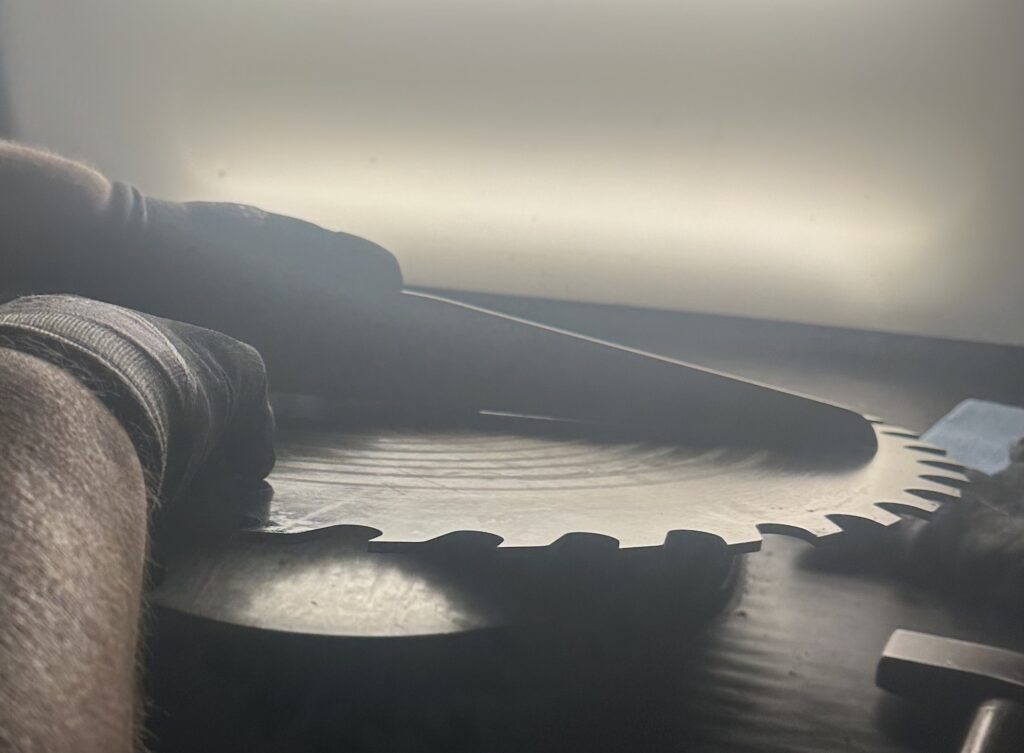
Features
Opinions
Maintenance
Sawmilling
Sawfiling 101: Avoid a tension headache
August 24, 2023 By Paul Smith
 Photo: BID Group.
Photo: BID Group. Let me start by asking, how much tension are you running in your guided saws? The answer should be, “Only as much as needed for the saws to stand up straight, both in and out of the cut.”
The higher the RPMs, the more tension will be needed. The RPMs will spin the saw while the tension will determine if the saw stands up straight. When a specific RPM is reached, the saw should stand up straight both in and out of the cutting process. One important factor with saw tension is that all the saws in the set are tensioned the same on both arbors. One saw out of tension can cause the saw or adjacent saws to cut bad lumber.
What does this look like? A correctly tensioned saw where the RPMs have the saw standing up, cutting straight, but the saw next to it isn’t, produces wedge-shaped boards. Another scenario: the saw that has too much tension and is right on the verge of being correct, but RPMs are just not enough to keep the saw standing straight, resulting in the saw going from one side of the guide to the other, all the while making thick and thin lumber.
Just as the tooth angles and side clearance must be the same, it is so very important for each saw to have the same amount of tension.
Advertisement
Remember that a saw plate should never rub or come into contact with the babbitt in the guides. They should run in the centre of the babbitted guides and only have contact with the thin film of lubricant. If the saws are tensioned correctly, they will run in the centre of the guides, cutting quality lumber. Keep in mind that saws should be benched flat, with even tension. Before ever tensioning a saw, flatness should be checked. Once the saw is tensioned, knots can be hidden from the gauge.
Most professional sawfilers can use a straight edge and “light” to properly tension a saw body. To be even more accurate, it is suggested that a tension gauge that fits your saws be used instead of a straight edge. Most saw suppliers can provide you with the tension gauges and straight edges you need. Smith Sawmill Service (SSS-BID) makes straight edges and tension gauges every Friday. When ordering tension gauges for circle saws, you will be asked for the length of the gauge and what tension is needed. I am sure different manufacturers will have their own way of checking for tension. We use a chordal measurement; this is the amount of curve calculated for the given length of the tension gauge where we take the diameter of the circle in inches. After many trials and studies in the mills we have concluded that the best running saws will be tensioned somewhere between 450-foot diameter and 250-foot diameter. Therefore, we machine tension gauges anywhere in-between these parameters – mostly between 200 and 400. The goal is to find your best running saw and build your tension gauge to best fit that saw plate. If we are currently selling your saws, you may want us to send you the same tension gauge that we use for your saws.
By having that correct tension gauge, you will be able to check tension and make sure the same tension is repeated each time.
SSS-BID regrinds and manufactures straight edges and tension gauges on a milling machine. We have found milling these products is far superior to grinding them.
We also have a saw design program that can check the load index on your saws. This will let us know if the saw design will allow the saw to stand straight up in the cut. This is a measurement of sawing accuracy that considers blade stiffness and the cutting forces. Saws must stand up straight to cut straight. Hopefully this information will help you and your team to avoid a tension headache.
 Paul Smith is a saw filing consultant and founder of Smith Sawmill Service, now part of BID Group. You can reach him at Paul.Smith@bidgroup.ca.
Paul Smith is a saw filing consultant and founder of Smith Sawmill Service, now part of BID Group. You can reach him at Paul.Smith@bidgroup.ca.
Print this page